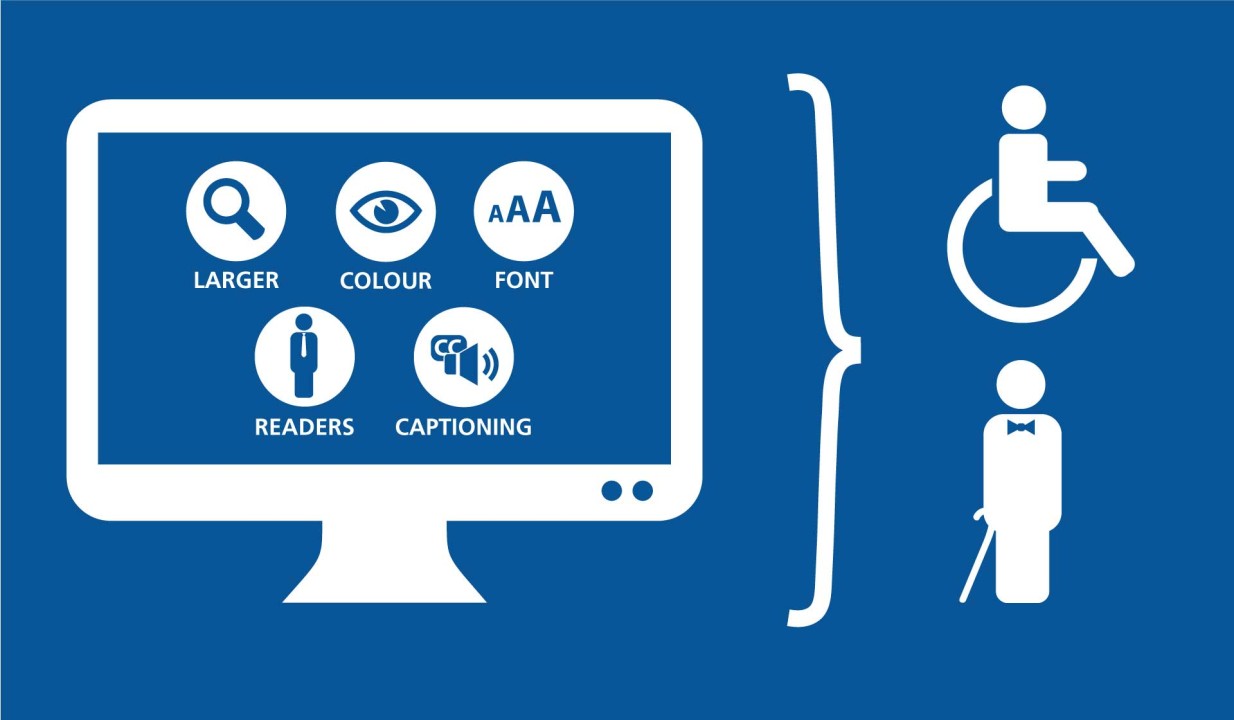Unveiling TikTok Advertising Secrets
Explore the latest trends and insights in TikTok advertising.
Accessibility for All: Web Design Without the Blind Spots
Unlock the secrets to inclusive web design and eliminate blind spots! Make your website accessible for everyone.
Understanding Web Accessibility: Key Principles and Guidelines
Web accessibility ensures that all users, regardless of their abilities or disabilities, can navigate and interact with websites effectively. This concept is founded on a few key principles that help create an inclusive online environment. The four main principles of Web Content Accessibility Guidelines (WCAG) are:
- Perceivable: Information and user interface components must be presentable to users in ways they can perceive.
- Operable: User interface components and navigation must be operable; users should be able to interact with all interface elements.
- Understandable: Information and operation of the user interface must be understandable.
- Robust: Content must be robust enough to be interpreted reliably by a wide variety of user agents, including assistive technologies.
By adhering to these principles, web developers can enhance the usability of their sites for a wider audience, including those with visual, auditory, physical, and cognitive disabilities. In addition to these principles, it's essential to follow best practices such as using descriptive alt text for images, ensuring high color contrast, and providing keyboard navigation options. Remember, understanding web accessibility is not just about compliance; it’s about creating a better user experience for everyone, which can ultimately lead to increased engagement and satisfaction across your audience.

Top Tools and Resources for Ensuring Accessible Web Design
Ensuring accessible web design is essential for creating an inclusive online environment. One of the top tools that can aid in this effort is the WAVE Web Accessibility Evaluation Tool. WAVE provides visual feedback about the accessibility of your web content by injecting icons and indicators into your site. Additionally, WebAIM's Color Contrast Checker helps ensure that your text is readable against its background, a crucial aspect for individuals with visual impairments. Implementing these tools can significantly improve your website's adherence to the WCAG (Web Content Accessibility Guidelines), enhancing user experience for all.
Beyond evaluation tools, resources like the A11Y Project offer comprehensive checklists and best practices for making your web design accessible. This collaborative initiative provides a wealth of information, including guidelines on keyboard navigation and screen reader compatibility. Moreover, using frameworks such as Bootstrap that prioritize accessibility can simplify the design process. By integrating these resources and tools into your workflow, you can ensure your website is not only compliant but also welcoming to users of all abilities.
Common Accessibility Mistakes in Web Design and How to Avoid Them
When it comes to web design, ensuring accessibility for all users is paramount. However, many designers inadvertently make common accessibility mistakes that can alienate individuals with disabilities. One major mistake is the lack of proper text alternatives for images. Without alt text, screen readers cannot provide context to visually impaired users, leaving them at a disadvantage. Additionally, using low-contrast color combinations can make it difficult for people with visual impairments to read content. To avoid these pitfalls, always include descriptive alt attributes for images and choose color palettes that meet accessibility standards.
Another frequent mistake is neglecting keyboard navigation, which is essential for users who cannot use a mouse. Many websites only allow navigation through mouse events, excluding individuals with mobility impairments. To enhance accessibility, ensure that all interactive elements can be accessed and operated using the keyboard alone. Furthermore, poorly structured HTML can lead to confusion; using proper semantic elements like headings, lists, and landmarks can provide a clear and meaningful layout for assistive technologies. By addressing these common accessibility mistakes, web designers can create a more inclusive online experience for everyone.